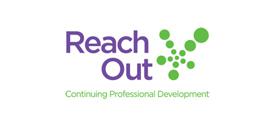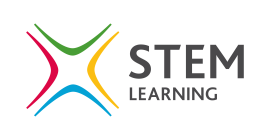Year 6: Animals, including humans
This list consists of lesson plans, activities and video clips to support the teaching of Animals, including humans at Year Six. It contains tips on using the resources, suggestions for further use and background subject knowledge. Possible misconceptions are highlighted so that teachers may plan lessons to facilitate correct conceptual understanding. Designed to support the new curriculum programme of study it aims to cover many of the requirements for knowledge and understanding and working scientifically. The statutory requirements are that children are taught to:
• identify and name the main parts of the human circulatory system, and describe the functions of the heart, blood vessels and blood
• recognise the impact of diet, exercise, drugs and lifestyle on the way their bodies function
• describe the ways in which nutrients and water are transported within animals, including humans.
Visit the primary science webpage to access all lists.
- ALL
- Simulation
- Video
- Game
- Activity sheet
Simulation
The Human Body Game
This resource contains Inside The Human Body is a high quality interactive simulation which allows children to take a look at the parts of ciculatory system and and explore the functions of the heart, blood vessels and blood.
Video
Snack Bar
A series of videos which look at the connections between health and diet by exploring whether a fictional snack bar should be banned, licensed or endorsed. This video is a fictional video conference between the marketing executive and the developer of the new 'Fruit Munchy Square' where the ingredients of a snack bar are discussed. Children could go on to compare different snack bars’ nutritional value and debate whether to ban, licence or endorse the product.
What affects your heart rate?
This resource provides a set of videos and a practical investigation aimed at supporting working scientifically in the classroom and relating it to real world experiences. In the first video Professor Brian Cox joins a teacher to find out how to set up and run an investigation to find out how exercise affects heart rate. He then joins the class carrying out their experiment, who look at variation in heart rate across the class before and after exercise, as well as how long it takes their heart rate to return to normal. In the other videos Brian Cox visits a sports scientist, analysing the heart rate of athletes and scientists measuring how exercise affects climbers at high altitudes.
A Healthy Lifestyle
This short film aimed at improving the subject knowledge of primary teachers on the topic of keeping healthy. It follows Sonia Cullington of WOW Fitness as she speaks about healthy eating and living. She looks at an everyday shopping list and discusses how they may or may not form part of a healthy balanced diet. Members of Sonia’s gym reflect on their improved understanding of the science of food and exercise and how it has had a positive impact on their lives.
Game
The Circulation Game
A common misconception about circulation is that there is a 'single loop', with the arteries carrying blood from the heart to the body (where oxygen is deposited and waste collected) and the veins carry blood from the body to the heart (where it is cleaned and re-oxygenated).
The correct model is that of the ‘double loop’ or dual circulation with blood from the left side of the heart going to a point in the body and returning to the right side of the heart, where it is pumped to the lungs and then to the left side of the heart where it is pumped around the body.
A great way of demonstrating circulation is to carry out a whole class simulation with children. Children represent red blood cells as they move around a classroom-sized simulation of the human body simulating the dual circulation of blood. They may give oxygen to the organs then go back to the right side of the heart and flow to the lungs to get more oxygen. Then they flow to the left side of the heart to be pumped around the body.
This activity goes on to look at sickle cell anaemia and how this affects those with the inherited condition. There is also a diagram of the circulatory system to colour and label.
Activity sheet
Heart Beaters (Ages 9-11)
The working of their heart muscles can be improved through exercise. Sports people who exercise regularly maintain a low resting heart rate and also have a fast recovery rate after exercise. One definition of a person’s ‘recovery rate’ is the difference between their heart rate when they have just stopped a strenuous activity (one where they are out of breath) and their heart rate 1 minute later. The healthier the heart, the more it will slow down in the first minute after exercise.
This resource contains 3 complete lessons and background knowledge to work scientifically investigating how and why our bodies change and recover after exercise.
Animals, including humans: being human
A series of lessons all about the human body. They include activities in which children explore the structure of the heart and lungs and learn about the double circulation of blood through the lungs and the rest of the body. Lesson ideas also include investigating how exercise affects pulse rate and finding out why is exercise good for humans.
Human Species
This resource contains six activities that link to Animals including humans. These activities are designed for use with mixed age groups classes of Year 5 and 6, but the activities linked to the Year 6 curriculum can be used in a Year 6 only class. These include:
- identifying the impact of healthy and unhealthy diet and lifestyle choices on the human body; including looking at diet, exercise, and drugs.
- exploring our circulatory system through investigating the effect of exercise on our heart rate, as well as looking at how nutrients and water are transported around our body through our blood stream.
Year 6 - Starters for Science* Suitable for Home Learning*
Starters for science provides the key learning, key vocabulary and 4 easy to run activities for each topic in Y6. These sheets may be sent home, so children can carry on learning science whilst self-isolating, or they can be used in class. There are further sheets for other year groups here.









